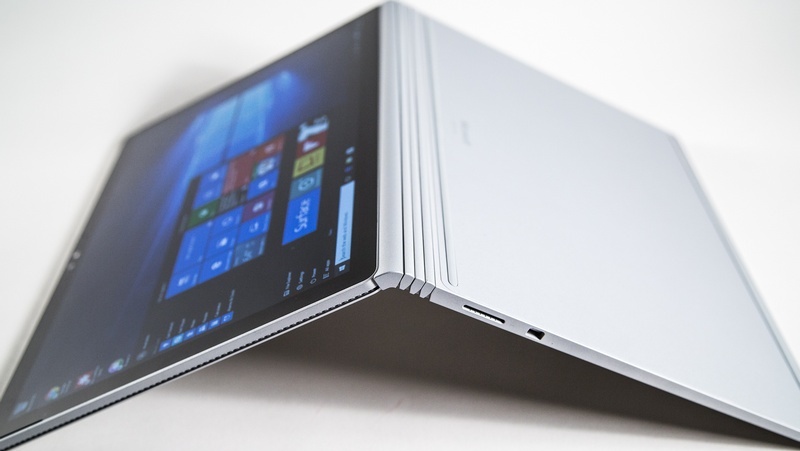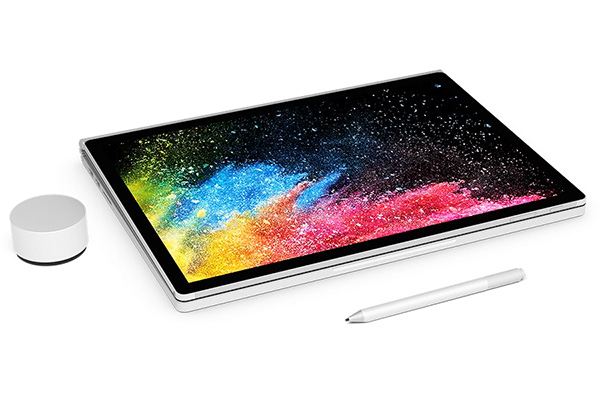

Unsurprisingly, the performance is great, and simply slayed on all the benchmarks. Let’s focus on the top machines, like the one I tested. If you don’t care about Mixed Reality, or gaming, or Microsoft’s lofty talk, there’s even a 13.5-inch starter model without integrated graphics and last-year’s (totally fine) Intel Core i5 processor. You can of course scale back to a 13/5-inch machine with 8GB of RAM and Nvidia GeForce GTX 1050 graphics for $US2,000. Mine was priced at $US3,300 thanks to 1TB of storage, but it starts at $US2,500, with 256GB of storage. The 15-inch version I tested sports a new eighth-generation Intel Core i7 processor, 16GB of RAM, and Nvidia GeForce GTX 1060 graphics. The new Surface Books, which come in 13.5 and 15-inch flavours now, are very powerful laptops with top-end guts and premium price tags befitting other high-design, high-spec machines like the MacBook Pro or Razer Blade Pro. While the company’s recently released Windows 10 “Creators Update” didn’t offer much a regular person could get excited about, it included improvements if you’re using the Surface Pen stylus or want to experiment with Microsoft’s nascent Mixed Reality platform. Last year’s big Microsoft hardware release was the impressively designed, if maddeningly niche Surface Studio. In the intervening time, Microsoft’s doubled down on its mantra that its devices and software are designed for artsy types.

Two years on, the refreshed Surface Book line looks even more like a monument to Microsoft’s biggest ideas. I haven’t used anything but a Windows computer since. For design nerds and tech enthusiasts, it’s easy to get excited by ambitious products like that. The thing was cool, and as an emblem of the types of futuristic computing experiences Microsoft claimed it was trying to create, it was impressive. When the original Surface Book first arrived in 2015, its unique detachable screen concept felt like a revelation - at the time it seemed genuinely innovative in a way that might bode well not only for users of the machine but for Microsoft itself. But do I need the thing, and should I spend $US3,300 ($4,849 here) on it? Of course not. So sure, the thing is for me, in the way that a very expensive sports car will most definitely sit in city traffic for hours right next to a yellow cab. Don’t get me wrong, it’s a powerful laptop, it’s beautiful, and the workspace its giant screen affords made me completely forget I wasn’t seated at my desk with my usual 32-inch extra-wide display. Typing at work on Microsoft’s new 15-inch Surface Book 2, I can’t shake the feeling that this thing’s not for me. Here’s what Mario Aguilar thought when he gave the top-of-the-line model a whirl:


 0 kommentar(er)
0 kommentar(er)
